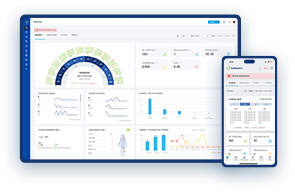
Tips for improving incident reporting
Incident reporting is essential for maintaining safety and preventing accidents in any setting. Prompt and accurate reporting of incidents provides organizations with valuable information that can be used to identify hazards, take corrective action, and prevent future incidents.
One of the key benefits of incident reporting is that it allows organizations to identify and address potential hazards before they result in accidents or injuries.
Elements of a good incident report
A good incident report should include certain key components to ensure that it is accurate and useful for future analysis. Here are some of the elements that should be included in a good incident report:

Time and date of the incident: It’s important to include the exact time and date of the incident to help with tracking and analysis.

Location: The location of the incident should be recorded, including the specific area or room, if applicable

Description of the incident: A detailed description of the incident should be included, including what happened, who was involved, and any injuries or damage that occurred.

Witness statements: Statements from witnesses should be included in the report, as they can provide valuable information about the incident and help with the investigation.

Photos or videos: Including photos or videos of the incident and the surrounding area can help provide additional context and detail.

Corrective actions taken: It’s important to include any corrective and preventive actions (CAPA) that were taken as a result of the incident, such as repairs or additional training.
See how Safetymint can help in managing incidents
Tips for improving incident reporting
Improving incident reporting is crucial for ensuring the safety and well-being of employees and preventing future incidents. Here are some tips for improving incident reporting within an organization:
Provide training for employees:
Regular training sessions can help employees understand the importance of incident reporting, as well as the procedures and protocols involved in reporting incidents.
Use incident reporting software:
Incident reporting software can make it easier for employees to report incidents, as well as providing a centralized location for incident data to be stored and analyzed.
Review and update incident reporting policies regularly:
Regularly reviewing and updating incident reporting policies can help to ensure that they remain relevant and effective, and that all employees are aware of the reporting procedures.
Encourage open communication:
Encouraging open communication between employees and management can help to create a culture where employees feel comfortable reporting incidents and are encouraged to do so.
Provide support to employees who report incidents:
Providing support and resources to employees who report incidents can help to reinforce the importance of incident reporting and encourage others to do so.
In conclusion, improving incident reporting is crucial for maintaining a safe and productive work environment. By following the tips mentioned above, organizations can encourage their employees to report incidents promptly and accurately, leading to better incident management and prevention in the future.

Ramesh Nair is the Founder and Principal Partner of Niyati Technologies, the company behind Safetymint.
He’s a dedicated advocate for workplace safety. Ramesh firmly believes that every individual deserves to return home safely after a day’s work. Safetymint, the innovative safety management software, emerged from this conviction. It’s a platform designed to streamline safety management, empower safety professionals, and enhance safety in workplaces.
Through his blog, Ramesh shares insights, best practices, and innovative solutions for workplace safety. Visit his social media profiles to follow him for regular updates.




